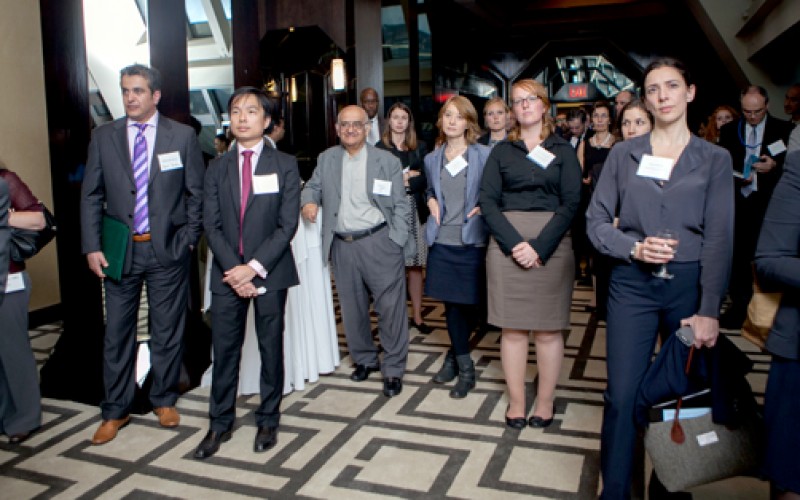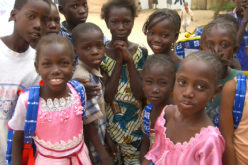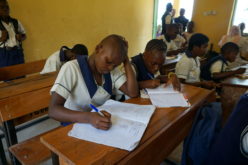Written by Shannon Kindornay, the articles first appeared on the Post 2015 Data Test website in November 2014. Shannon Kindornay is an Adjunct Research Professor at the Norman Paterson School of International Affairs, Carleton University. She is also member of the Post-2015 Data Test team.
Universality Post-2015 – The Good, the Bad and … the Necessary: Part I
For just over a year I have been working with seven country teams to road test the universal post-2015 sustainable development framework as part of the Post-2015 Data Test. As the lead on the Canada case study, I have spent a lot of time thinking about the concept of universality. Does a universal agenda really make sense across high, low and middle income countries? If so, how might it work in a way that makes sense globally but is also relevant nationally? Is my country, Canada, and other “rich” countries, ready for a global paradigm shift that moves from seeing development as something that “happens over there” to something that happens at home?
Even after a year, I find that I am of two minds on the concept of universality. On the one hand, I see “the good” – the potential gains arising from an agenda that recognizes shared national and global challenges, and offers a much needed paradigm shift away from outdated global development assumptions of the past. On the other hand – “the bad” – I have a long way to go before being convinced that the post-2015 Sustainable Development Goals (SDGs) will be fully adopted by all countries, representing a true paradigm shift, and that they will sufficiently address power asymmetries at the global and national levels that inhibit less developed countries from owning and realising their own sustainable development ambitions. Will the implementation of the SDGs result in another globally determined framework imposed on countries that rely on external financing? Will it enhance or undermine country ownership? Contemplating “the good” and “the bad,” I am left with…the necessary – the steps that need to be taken to realise the good, and minimize the potential bad, of a universal agenda.
The Good
Last December Ruth Levine, Program Director for Global Development and Population at the Hewlett Foundation, wrote a blog in which she very clearly pointed out the benefits of a universal set of SDGs. She noted that, historically, “global” development frameworks have only really applied to middle and low-income countries, with high-income countries only entering the scene to foot the bill. With the universal SDGs, Levine highlighted a “profound conceptual pivot,” one that moves beyond defining the problems of “development” as belonging to only one particular group of countries and recognizes that high-income countries are not immune to, for example, social unrest, governance challenges, and ensuring inclusive growth and decent job creation.
Indeed, one of the post-2015 framework’s greatest contributions could be to enable the international community to move beyond the old North-South dichotomy. As it currently stands, the universal set of post-2015 SDGs, as proposed by the Open Working Group on Sustainable Development Goals, seeks to do this. The universal nature of the goals recognizes the shared challenges that countries face at the national level (e.g. violence against women, employment, income inequality, social exclusion, environment safeguards), defying our assumptions behind what development means and moving us away, at least on paper, from a world where some countries hold the moral high ground of being “developed.” At the same time, the framework captures issues more specific to lower income countries (e.g. internationally defined extreme poverty, child stunting, full primary education) and higher income countries (e.g. sustainable consumption and production). The proposed universal agenda also shifts our view towards common challenges such as addressing climate change and improving international financial stability. It seeks to promote shared solutions in an inter-connected world.
Importantly, as our initial findings from the Post-2015 Data Test show, a universal set of goals could work in practice, depending on how the post-2015 architecture plays out. We road-tested seven candidate post-2015 goals in all seven countries. For each goal, a common set of universal 20 targets and 45 indicators were tested in all countries. In addition, country teams identified a set of national level targets and indicators to test in their country. By taking this approach, we sought to balance the need for universal application and international monitoring and comparability with national relevance and utility. The pickle for folks negotiating the post-2015 framework will be to establish an appropriate architecture, including its associated monitoring and accountability structure, which supports a universal set of goals that recognize the transboundary nature of the world’s most acute challenges, while still allowing space for country specificity.
The Bad
The MDGs were critiqued by developing countries as an externally imposed, top-down agenda. This time around, significant efforts have been made to ensure that the post-2015 framework is informed by consultations with citizens, civil society, the private sector, international agencies, and governments, and is negotiated through an inter-governmental process. In theory, this should mean the creation of a universal agenda that is, for the most part, universally owned.
Yet, as our research shows, countries and regional groupings have already established their ten, twenty and sometimes longer year plans. Take Senegal for example “Plan Sénégal Emergent,” the government’s medium and long term plan, was developed through broad national consultations and sets out a vision for the country to emerge economically by 2035. The African Union has its Agenda 2063. Most of Canada’s provinces have developed poverty reduction strategies. In October, when our team met with colleagues in Washington D.C. to discuss initial findings from the Post-2015 Data Test, the question of how country and regional level plans can be integrated into the SDGs was raised. To my thinking, the question is not how global, regional and national plans can be reconciled with the SDGs. The real question is how the SDGs can be used to support existing national and regional level plans.
While high-income and many middle-income countries will have the space to decide on the extent to which the SDGs frame their existing efforts, I am not confident that this will be the case for lower-income countries that rely heavily on external resources. The SDGs move the goal post higher for all countries but this will be felt most keenly in the places where capacities are weakest. For many donor countries, the SDGs will become the new lens through which development cooperation efforts occur. And as the donor community moves forward on this agenda in a context that continues to be characterized by a power asymmetry between finance providers who do not fully respect country ownership and finance receivers who are incentivized to take what they can get, there is a risk that the SDGs will, once again, serve as an externally imposed framework, subject to some of the same criticisms as the MDGs.
Compounding this is the risk, at least at this point in the game, that despite the rhetoric of universality, the SDGs will be universal in name but not in practice. Those of us from the global North know very well that traction on the SDG framework in our countries is going to be a challenge. As Ruth Levine rightly points out, and the Canada case study under the Post-2015 Data Test shows, domestic constituencies in so-called developed countries are close to clueless about the global agenda their foreign ministry colleagues are negotiating. Indeed, without greater engagement with domestic constituencies in the North, not to mention buy-in at the political level, there is a real risk that universality will ring hollow in developed countries. This may also be the case in a number of middle-income countries, particularly those who have their own resources and less of a financial incentive to robustly adopt and implement the global agenda. We run the risk of having a universal agenda that defines national priorities for one sub-set of countries and is completely ignored (with the exception of defining development cooperation objectives) by another.
What steps could be taken to avoid a scenario where we have a universal post-2015 agenda only in principle but not in practice? In Part II, I suggest what needs to be done to ensure the universal post-2015 framework represents a true paradigm shift.
Universality Post-2015 – The Good, the Bad and … the Necessary: Part II
In the first part of this blog, I discussed the good and the bad of the universal post-2015 agenda, drawing on our research road-testing the post-2015 sustainable development agenda in seven high, middle and low-income countries. In this part, I unpack “the necessary” – steps that need to be taken to realise the good, and minimize the potential bad, of a universal post-2015 agenda.
The Necessary
Our research shows that a universal set of SDGs can work, even if it will be challenging and difficult in practice. If this is going to happen, however, at least one game changer is needed: a shift in attitudes.
At a meeting hosted by the Center for Global Development in Washington D.C. in mid-October, where we presented preliminary findings from the Post-2015 Data Test, a lively discussion on how to make the universal agenda one that was accepted and applied universally, in all countries, ensued. Many participants recognized that demonstrating the utility and relevance of the global agenda to domestic constituencies in higher income countries presents a challenge. One participant went so far as to say that it would be political suicide for any US government to announce that it will now be setting national priorities according to an internationally negotiated agenda. The discussion begged the question, if the universal agenda isn’t going to have traction beyond the developing world, then why bother? Why not just establish the MDG 2.0 agenda, one that tackles the existing MDGs, sprinkles in a greater focus on inequality, adds a few more key priority issues like industrialization and employment, and gives a bit more billing to environmental issues? Eliminate the controversial issues, like governance and reproductive rights, and get on with it.
The answer, I hope, should be fairly clear. The world has changed since the MDGs were conceived. The North-South dichotomy doesn’t work anymore (if it ever did) and the challenges we face at the global and the national level are shared and complex in nature. And we need to deal with it.
What we really need is a shift in attitudes, particularly in the places that have historically financed global development agendas, rather then been subject to them. So what would a shift in attitudes look like in terms of outcomes for the post-2015 agenda? For me, a shift in attitudes would be revealed by at least two key outcomes.
1) Creation of a universal agenda in which all (or at least most) countries take the SDGs seriously, regardless of their income levels.
A shift in attitude means taking the universal agenda seriously in all countries. For countries that have the experience of the MDGs, this is less of a challenge – these governments, including many of their citizens, typically know about global development frameworks. However, higher income countries, typically those in the North, do not have this experience. The MDGs are a foreign concept to most of our citizens, including individuals working for the government outside the foreign ministry. Taking the universal agenda seriously inall countries means engaging a much broader domestic constituency on the post-2015 agenda.
2) Establishment of a universal agenda that goes beyond MDGs 2.0 and captures the broad complexity of sustainable development.
Some countries have expressed concern with the breadth of the SDG agenda, as it is currently laid out in the OWG document, and pointed out that universality may take our focus away from where efforts are most needed globally. This is the concern of my country, Canada. The government’s priorities for the post-2015 agenda have decidedly been of the MDG 2.0 genre – focus on the most vulnerable and the poorest globally (i.e. not in Canada), value-for-money efforts to support maternal, newborn and child health and job creation and inclusive growth, and emphasis on the importance of accountability. From what we have seen so far, there is little effort in Canada to really embrace the notion of universality. Another concern with universality is that it will provide countries with the justification to look inward, and not tackle global challenges and meet global responsibilities. For example, governments might reduce their aid spending, claiming that they need additional funds to tackle poverty at home.
To my thinking, there is no zero sum game to ensuring a continued focus on the poorest globally and having a universal agenda. Canada can be a leader on maternal, newborn and child health globally and address the deplorable situation of Aboriginal Canadians, growing inequality, and the sustainable management of our natural resources which has been cause for international concern. We can address our national challenges in the context of a global framework while ensuring that our development cooperation efforts support the poorest and most marginalized globally. This is what we should be doing anyway.
The current breadth of the universal agenda speaks to the wide challenges countries share. It also has the flexibility to cover issues that are more specific to different country contexts. While this creates challenges for the monitoring and accountability framework, this approach may be exactly what is needed to not only capture the breadth of sustainable development challenges, but also ensure relevancy of the agenda across countries.
Though a change in attitudes is needed, this won’t be easy. Just look, for example, at who is negotiating the agenda. From the lower income and middle income countries, you have folks that have played this game time and again. They are ready for a fair turn of play (and are unlikely to back down), recognizing that indeed, things are different this time around. From the higher-income countries you have the foreign ministries – folks who have historically played a role in determining development frameworks and promisesfor other countries, but not their own. The extent to which these negotiators truly see their own sustainable development challenges – which require no small measure of humility – and are using this perspective to inform their position remains questionable.
So, what can we do to push the much needed shift in attitudes? Here are two suggestions.
First, get the right people involved in post-2015. Foreign ministries need to begin engaging with domestic constituencies across government and at subnational levels. In high income countries, it is time to raise awareness of the post-2015 agenda, and quickly. Get inputs from national and sub-national government departments and engage domestic stakeholders in the private sector and civil society. Domestic stakeholders have a valuable contribution to make to the post-2015 process. Their forward looking plans and ongoing initiatives offer the domestic roadmap for post-2015 implementation.
Second, keep the pressure on for a truly universal agenda, and build the right civil society coalitions to do so. Civil society engagement on the post-2015 framework has been substantial to date through global coalitions and at the national level in many middle and low-income countries through the UN’s consultations processes. In high-income countries, it’s time to bring domestic CSOs, beyond environmental and international development communities, into the conversation. As noted by Andy Norton from ODI, the SDGs will serve as a global framework for social mobilization, advocacy and dialogue. Domestic CSOs will play a key role in translating the mobilizing power of the SDGs to the national, subnational and local levels. CSOs already engaged on post-2015, such as Beyond 2015 and Action 2015 are working to bring these folks into the conversation as natural allies. Going forward, these efforts will be critical to looping in domestic CSOs and building momentum for a transformative, universal post-2015 framework.
Negotiations on the post-2015 agenda will intensify in the months to come. While ensuring the SDGs are truly universal won’t be easy, it is necessary, otherwise we risk missing a potential opportunity to ensure that our global sustainable development framework is relevant for the world we live in and reflects the paradigm shift that has already occurred.
2,353 total views, 3 views today











